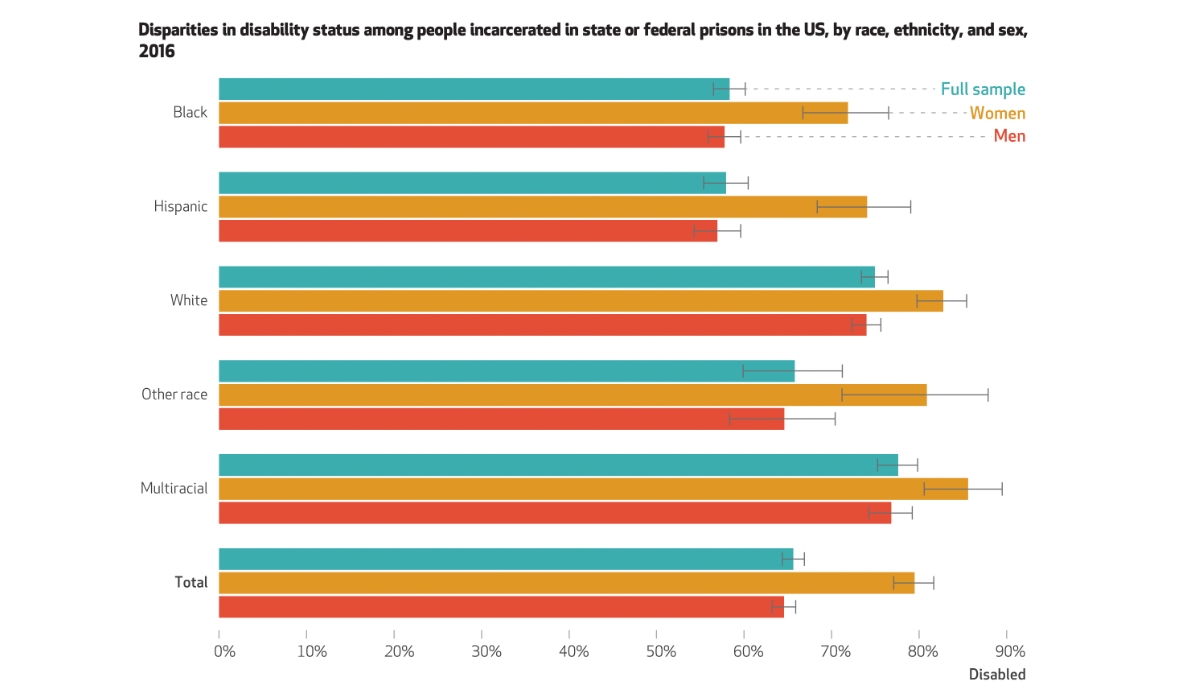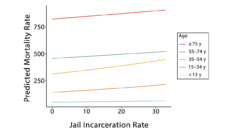People with disabilities have experienced discrimination and high rates of incarceration throughout history. U.S. prisons incarcerate roughly 1.2 million people today, and new estimates indicate that almost two-thirds of the prison population live with a disability.
Laurin Bixby and colleagues analyzed the link between disability and incarceration in state and federal prisons using responses from roughly 23,000 participants in the 2016 Survey of Prison Inmates. The team analyzed the results by sex, race, and ethnicity shown in the bar chart above. Regardless of race or sex, the teal bars show the majority of respondents reported a disability. The length of the orange bars depicts the overwhelming probability that incarcerated women are living with a disability.
While White incarcerated persons had a higher prevalence of disability, the researchers noted that Black, Hispanic, and multiracial people with disabilities were considerably overrepresented compared to the general population. These findings are consistent with a growing body of evidence that people of color are more likely to be incarcerated than White people.
The Americans with Disabilities Act (ADA) protects people with disabilities from discrimination, and incarcerated persons are the only people in the country with the right to health care. Yet, about 63% of incarcerated individuals with psychiatric illness do not receive mental health treatment even though the carceral system is the largest mental health care provider in the country. People with non-psychiatric disabilities, such as deafness or impaired mobility, often experience little to no accommodation inside prison walls.
Bixby and team discuss how incarcerated persons with disabilities need to be a focus of new prison policy initiatives to prevent the over-incarceration of people with disabilities and to provide necessary health care to this large and disadvantaged swathe of the prison population.
Databyte via Laurin Bixby, et al. The Links Between Disability, Incarceration, and Social Exclusion. Health Affairs, Disability and Health, 2022.














